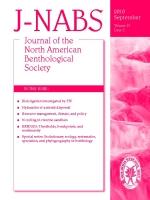Ecological thresholds have much potential as a tool to use for watershed management. Not all systems exhibit abrupt nonlinear responses, but the threshold concept is still useful for describing stressor responses or changes in state variables. For example, the minimum detectable negative response is an initiation-of-impact threshold that might allow for planning and management before population-scale change occurs in taxa. An extirpation threshold, which is the point where a system loses a vital component, such as a species or function, also exists. A number of taxon-specific thresholds to landuse change in watersheds have been identified in previous research. We apply these values to make watershed-level and spatially explicit forecasts regarding imperilment and loss of biodiversity in the face of watershed alterations. We show that unchecked development in the Potapsco River watershed of Maryland could result in the loss of nearly 60% of the benthic macroinvertebrate taxa by the time impervious surface cover reaches 15% of the watershed. Application of analytical thresholds to projected increases in residential development in the Middle Patuxent River watershed by 2030 indicates substantial future changes in aquatic biodiversity, with up to 50% of benthic macroinvertebrate taxa disappearing from some stream reaches and few reaches immune from projected biodiversity loss or impairment.
How to translate text using browser tools
29 September 2010
Applying thresholds to forecast potential biodiversity loss from human development
Robert H. Hilderbrand,
Ryan M. Utz,
Scott A. Stranko,
Richard L. Raesly
benthic macroinvertebrates
ecological thresholds
impervious surface
land cover change
urbanization





